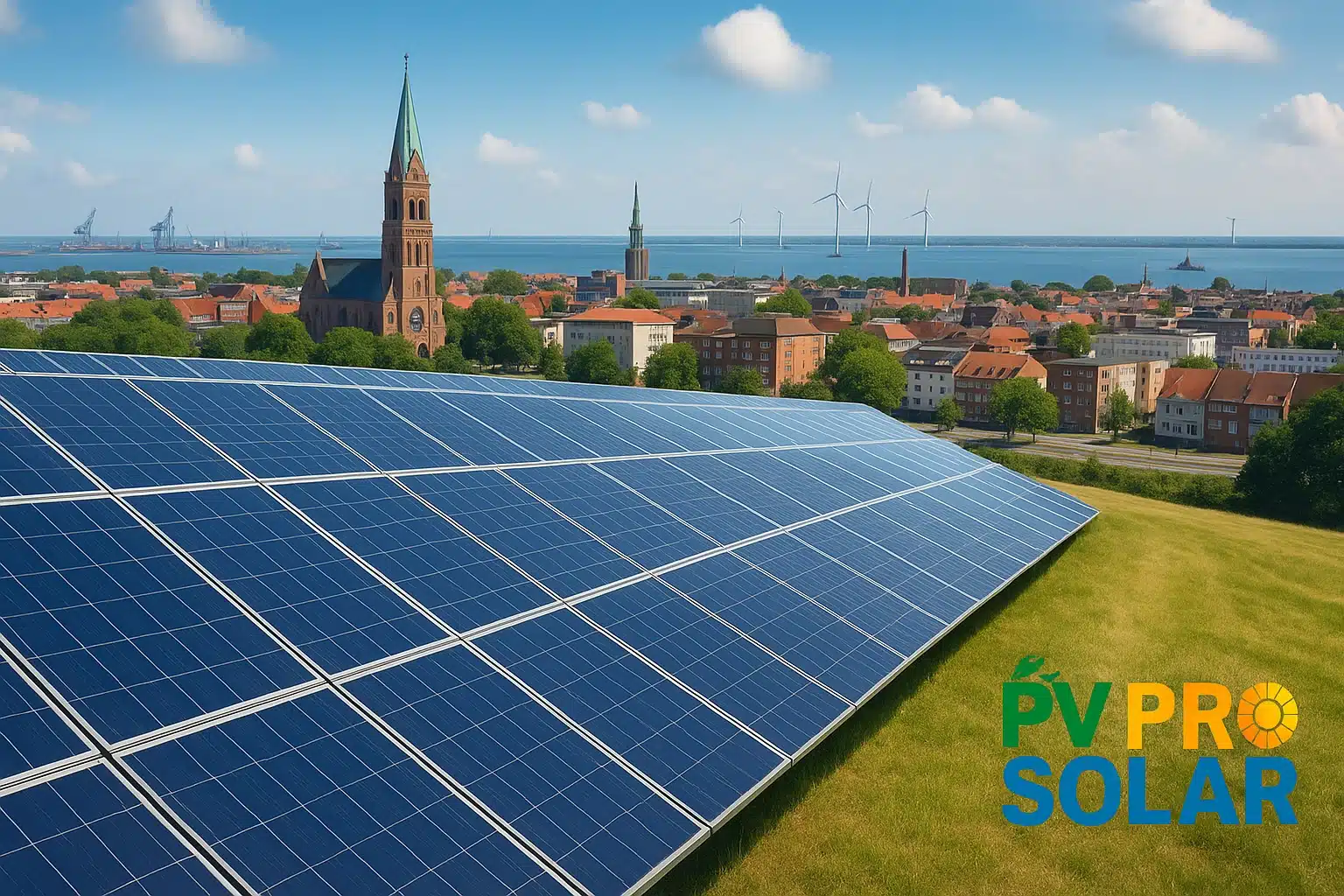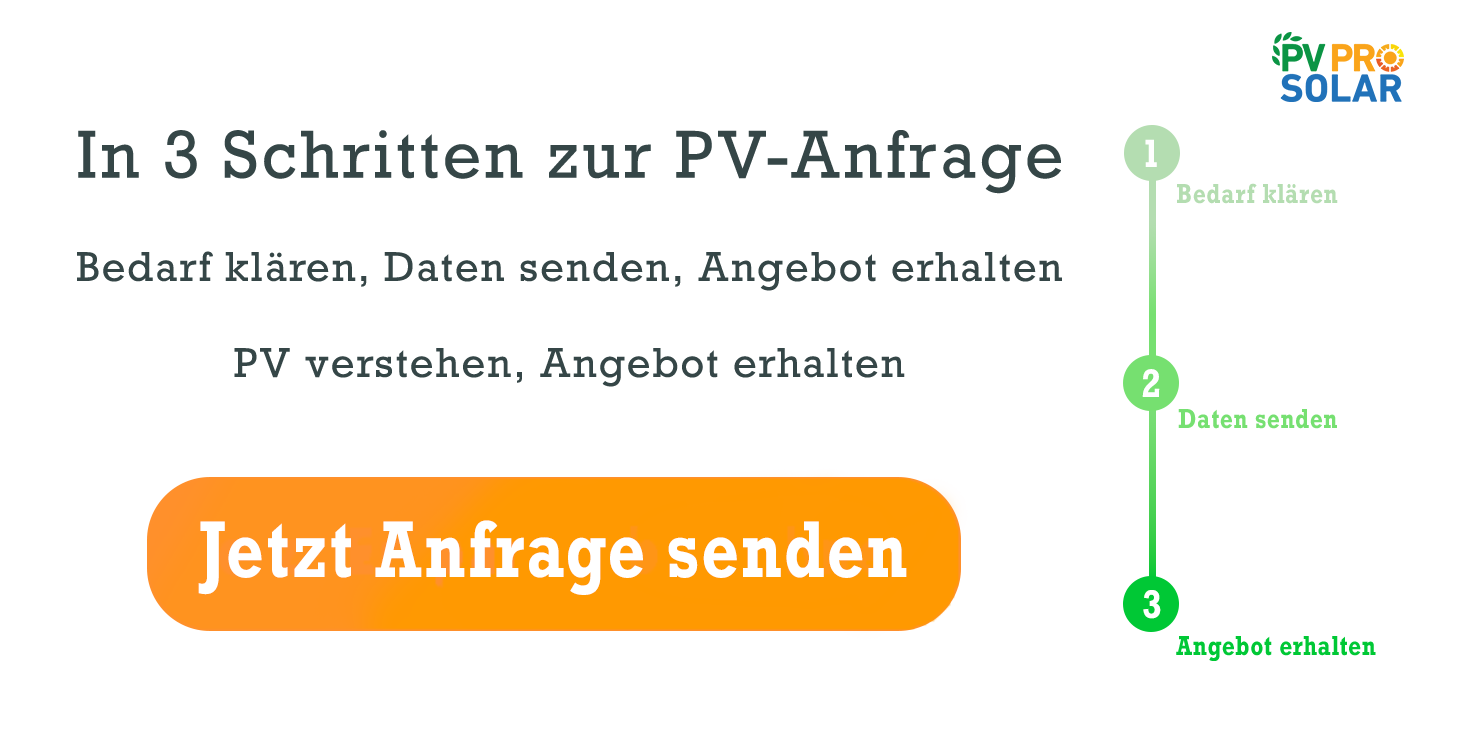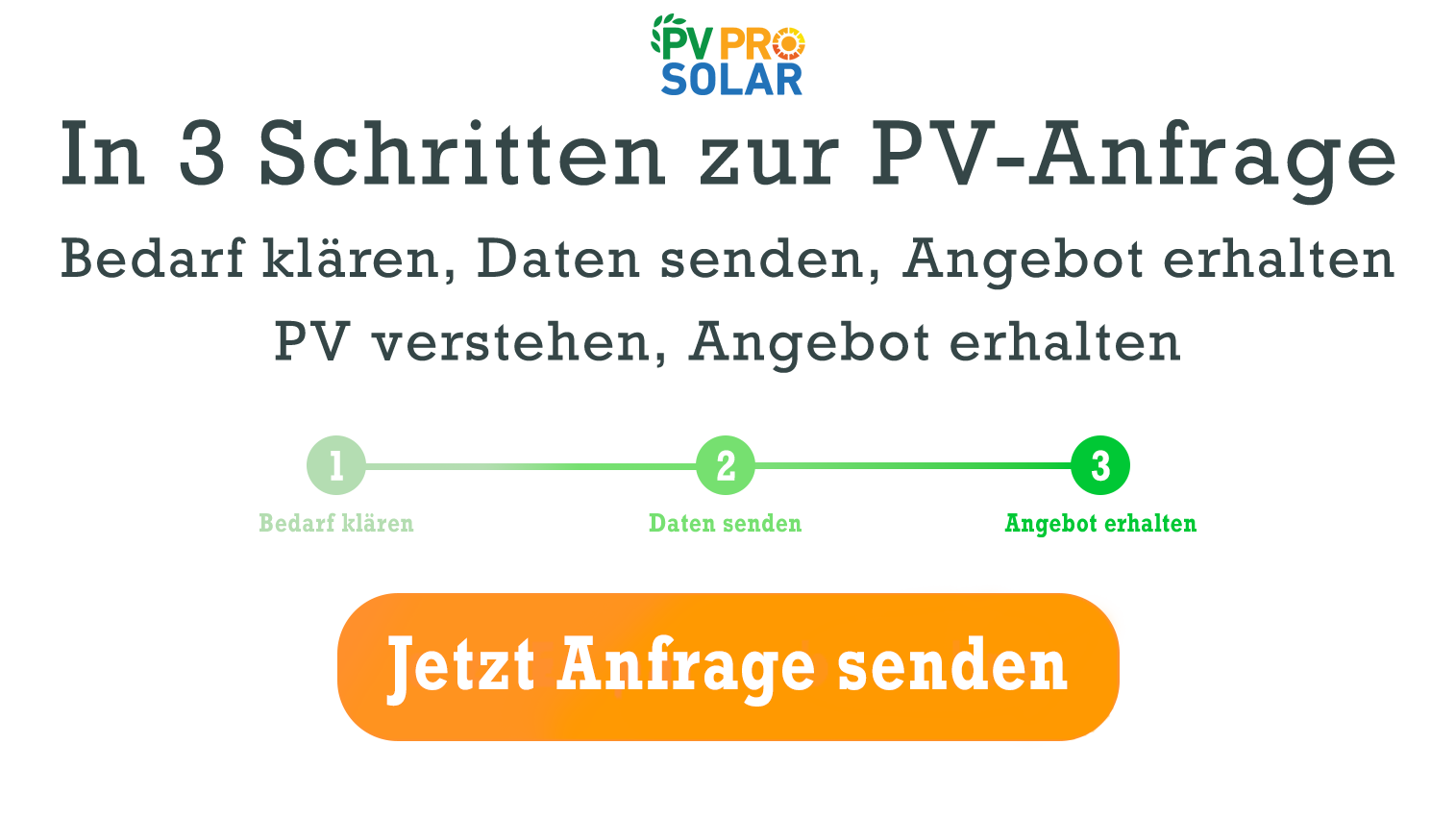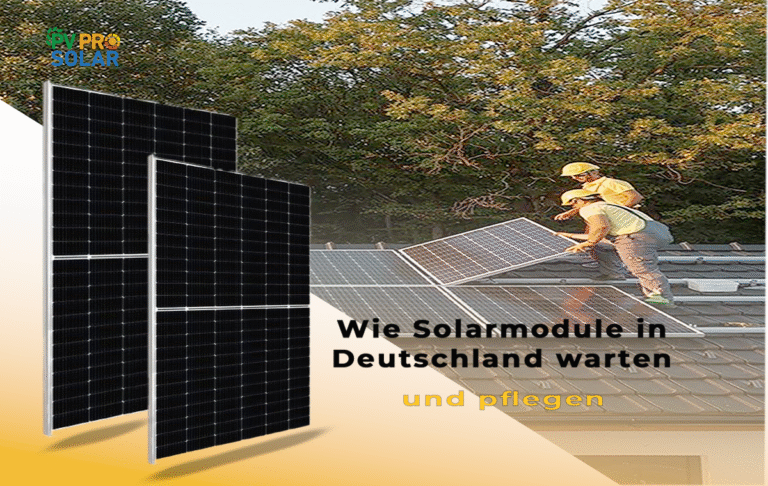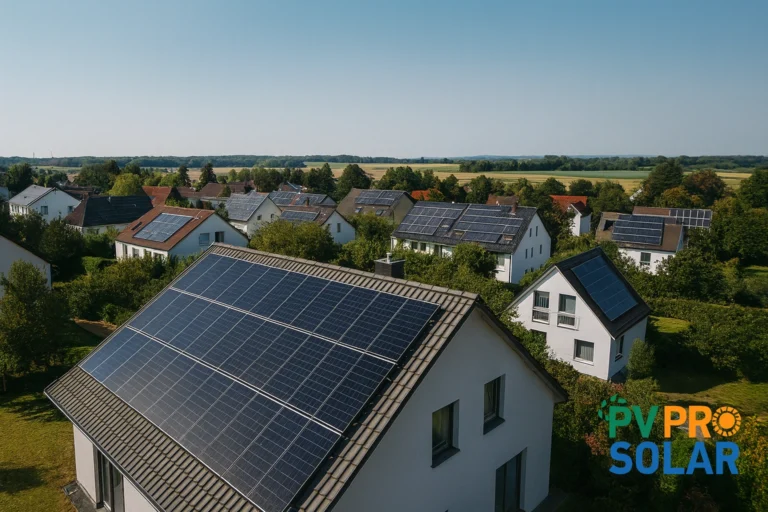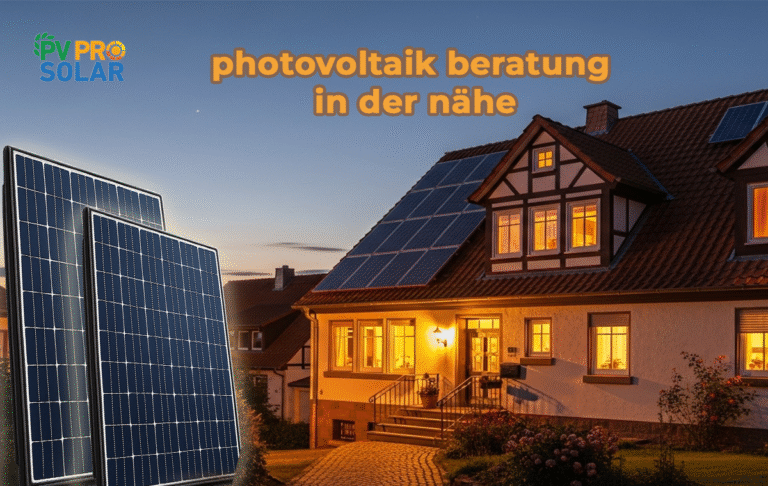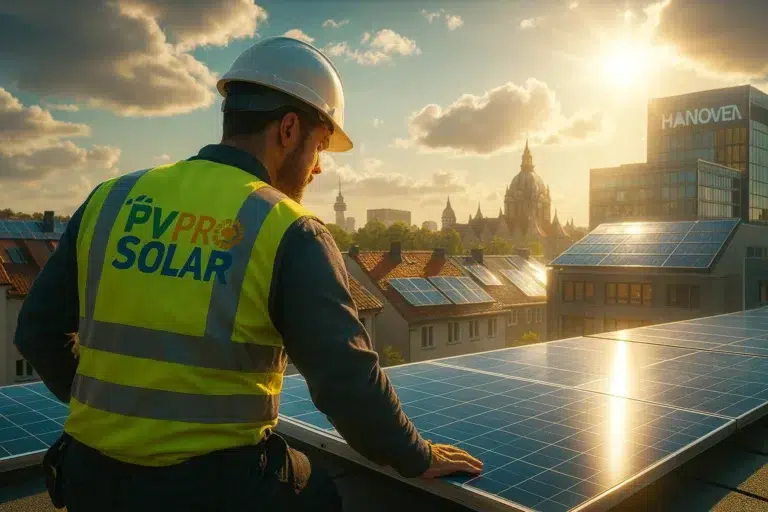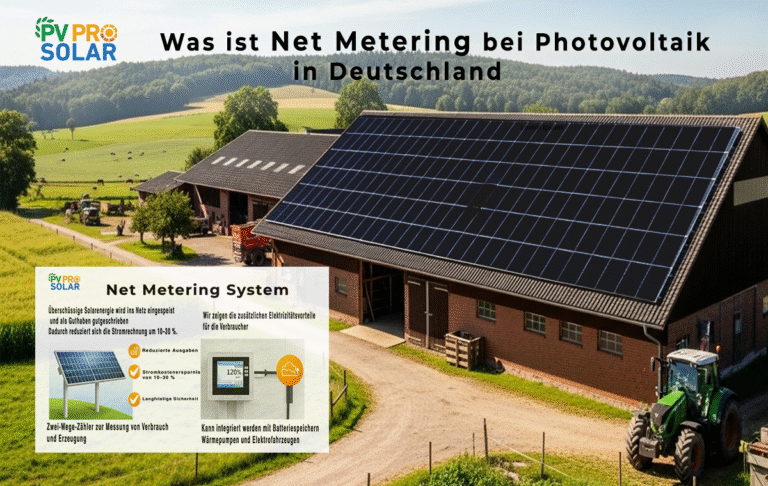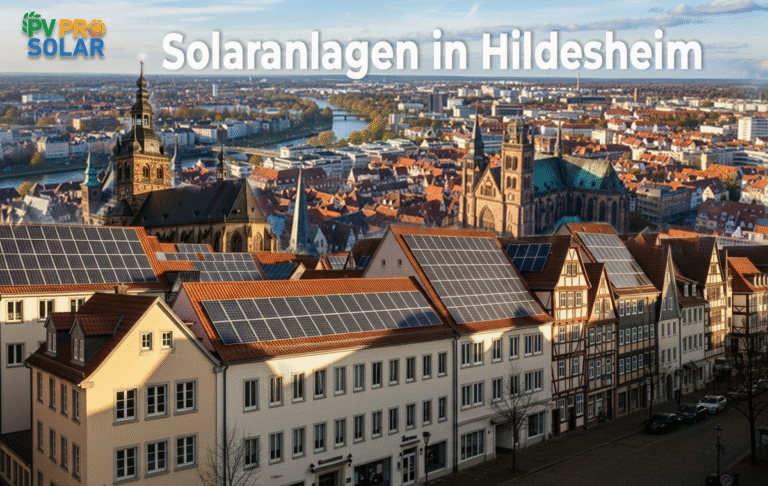Photovoltaic solutions in Wilhelmshaven – North Sea region- Is solar power worth it?
Wilhelmshaven on Germany’s North Sea coast offers excellent conditions for solar energy. With solid levels of solar radiation, attractive subsidy programs, and growing environmental awareness, installing a photovoltaic (PV) system is a smart investment for homeowners, businesses, and agricultural operations alike. But what are the specific advantages? Which technical and legal aspects should you be aware of? This article explores everything you need to know about installing and operating photovoltaic systems in Wilhelmshaven.
What Are the Benefits of Photovoltaics in Wilhelmshaven and the North Sea Region?
Wilhelmshaven, on Germany’s North Sea coast, is rapidly becoming a hub for renewable energy and sustainability. Photovoltaics (PV) represent a form of energy that supports regional efforts toward climate neutrality.
- Significant savings on electricity bills: Self-consumption of solar power substantially lowers your energy costs, which is vital for homes, utility buildings, and commercial services alike.
- Government incentives: KfW loans, EEG feed-in tariffs, and tax relief measures make investing even more attractive.
- Climate protection: Reduce your carbon footprint by producing clean, renewable energy, powered by local resources and supported by Germany’s environmental goals.
- Increase in property value: Energy-efficient homes are in high demand, especially near coastal transport corridors.
- Energy independence: A hedge against rising electricity prices and fossil gas dependencies.
Even with the region’s notoriously changeable weather, modern PV systems have proven to be remarkably efficient and low-risk, particularly when combined with battery storage and professional planning.
How Suitable Is Wilhelmshaven’s Weather for Solar Power?
Contrary to popular belief, northern Germany can be highly efficient for solar energy production. Wilhelmshaven receives around 1,000–1,100 kWh/m² of global radiation per year—ample for generating solar energy from high-efficiency panels. Thanks to modern modules (e.g., monocrystalline cells), PV systems can deliver stable output even under cloudy skies. Moreover, the cool coastal air temperatures enhance module efficiency and performance. The region’s open landscapes and depleted gas fields may also accommodate future hybrid systems integrating PV and hydrogen production.
Which Roof Types Are Best for PV Systems in Wilhelmshaven?
Wilhelmshaven’s architecture and industrial zones offer diverse installation options:
- South-facing gable roofs: Offer maximum solar yield, ideal for residential homes and developed neighborhoods.
- Flat roofs on commercial buildings: Allow flexible panel orientation—perfect for businesses needing high supply stability.
- Barn and shed roofs in agriculture: Provide large surface areas with major cost-saving potential for heat and utility projects.
Due to the port city’s strong winds, structural integrity and wind load assessments are crucial. A qualified provider will assess the building’s ability to accommodate PV systems, including future converter units for hybrid energy models.
What Are the Typical Costs for a Photovoltaic System in Wilhelmshaven?
The initial investment depends on the system size, module type, and battery storage:
| System Size | Without Storage | With Storage |
| 5 kWp | approx. €8,000 | approx. €13,000 |
| 10 kWp | approx. €14,000 | approx. €20,000 |
| 30 kWp (Commercial use) | approx. €35,000 | approx. €50,000 |
Government subsidy programs can significantly reduce upfront costs. Additionally, systems up to 30 kWp have been exempt from VAT (0%) since 2023 under Section 12(3) of the German VAT Act (UStG). When set up properly, solar projects also benefit from lower operational costs and long-term energy supply security, especially in energy-intensive sectors like transport or heat production.
What Funding and Subsidies Are Available for PV Systems in the Wilhelmshaven Area?
Wilhelmshaven and Lower Saxony provide robust support mechanisms for the energy transition:
- EEG feed-in tariff: For surplus electricity sent to the grid
- KfW loan program 270: Low-interest loans for PV projects
- BAFA battery storage grant: Encouraging self-consumption with battery capacity
- State subsidies: Available for utility, agricultural, and industrial PV expansions
- Local support: Offered through city services or by EWE Netz AG for grid connection
PVPro Solar GmbH offers consulting to navigate and combine these resources for maximum financial efficiency.
What’s the Process of Installing a Solar System in Wilhelmshaven?
A well-organized PV installation in Wilhelmshaven usually follows these steps:
- Initial consultation & site assessment
- Profitability analysis and system planning
- Grid connection request with EWE Netz
- Quotation and contract signing
- Installation & electrical connection (2–5 days depending on level and size)
- Registration with the Federal Network Agency and system completion
As Wilhelmshaven develops into a deep-water port for offshore wind and hydrogen storage, PV solutions play a vital role in decentralizing power supply. Working with a full-service provider like PVPro Solar ensures a reliable process from concept to commissioning.
Is a Battery Storage System a Smart Addition in Wilhelmshaven?
Absolutely. Battery storage is a key element in the Wilhelmshaven integrated energy model:
- Self-consumption rates up to 80%
- Backup power in case of outages
- Peak shaving in commercial environments with turbines or heavy load equipment
Standard lithium-ion batteries range from 5 to 15 kWh for residential use. Businesses and farms can set up systems exceeding 30 kWh. As Wilhelmshaven expands its role in Germany’s green hydrogen and wind economy, battery systems will serve as crucial links between sources of generation and regional transport grids.
How Do Businesses and Farms Benefit from Photovoltaic Solutions in Wilhelmshaven?
- For businesses: Lower ongoing energy costs and a strategically enhanced sustainability image
- For agriculture: Efficient use of large roof areas on barns and sheds, which are often situated in open, natural environments
- Tax advantages: Accelerated depreciation (AfA) and tax-free power sales for systems up to 30 kWp
- Tailored support programs: For farms and rural enterprises, especially those connected to regional development funds
PVPro Solar offers comprehensive photovoltaic solutions for commercial and agricultural clients—from feasibility studies to long-term maintenance.
What Role Does the Feed-In Tariff Play on the North Sea Coast?
Feed-in tariffs are planned and updated annually by the Federal Network Agency. In 2025, the rate for small systems under 10 kWp stands at approximately 8.1 cents/kWh. While self-consumption brings the greatest savings, feeding surplus energy into the grid can provide valuable additional income—especially in this central shipping and trade region with strong sun exposure. This makes the North Sea coast ideal for generating natural energies with tested efficiency.
What Legal Requirements Must Be Considered When Installing a PV System?
- Registration with the Federal Network Agency and local grid operator
- Entry into the national Market Master Data Register (MaStR)
- Planning permission, if flat roof systems exceed 50 cm in height
- Tax registration with the local tax office (unless exempt under §3 No. 72 EStG)
A certified installer typically handles all of these legal and administrative applications on your behalf, ensuring that every step is scheduled and professionally managed.
Why Is PVPro Solar the Ideal Partner in Wilhelmshaven?
PVPro Solar GmbH offers:
- Local knowledge and experience with the North Sea region, including key energy infrastructure like liquefied gas terminals
- Tailored systems for private homes, businesses, and farms—each project carefully planned and executed
- Professional assistance with funding, legal applications, and permits
- High-quality components, tested for coastal conditions, and transparent advice
- Full-service offering including monitoring and maintenance
The team understands regional challenges and provides an all-in-one solution to customers in Wilhelmshaven and surrounding areas—focusing on long-term reliability and value.
Installing photovoltaic solutions in Wilhelmshaven – North Sea region is a smart, future-ready decision. Whether you own a private home, run a business, or manage a farm, the combination of cost savings, subsidies, and ecological responsibility speaks for itself. Even with variable coastal weather, the region delivers stable solar yields. And with an experienced partner like PVPro Solar, switching to solar energy is easier than ever.
How much electricity does a 10 kWp system produce annually in Wilhelmshaven?
On average, around 9,000 to 10,500 kWh, depending on roof orientation, panel quality, and shading.
Can PV systems be installed on listed or heritage buildings?
Partially – but you’ll need approval from the heritage protection authority. Flat roof or in-roof systems are often preferred in such cases.
